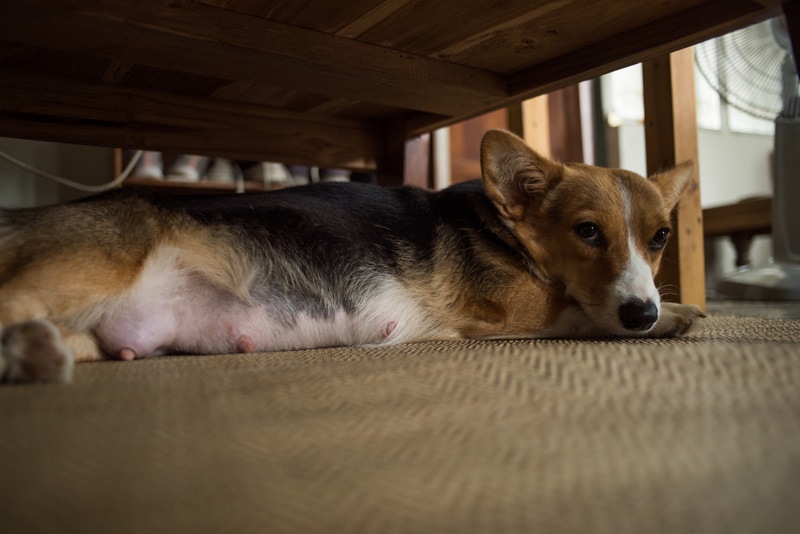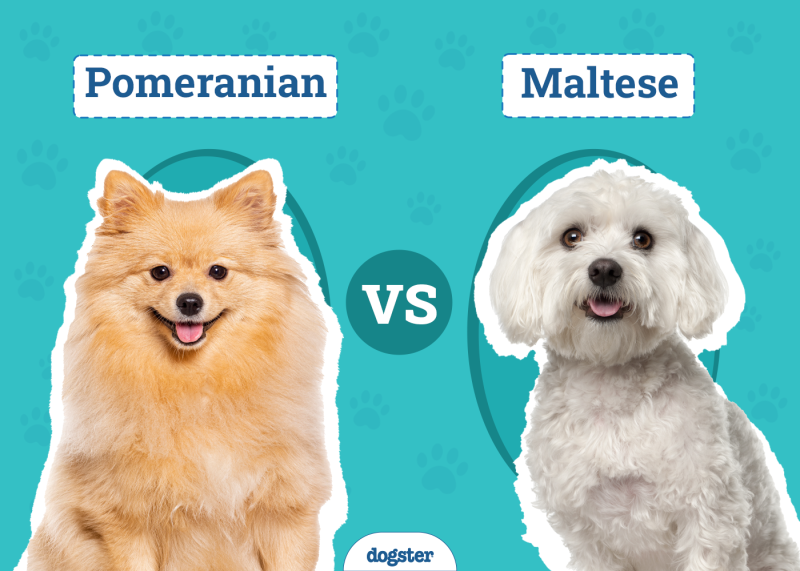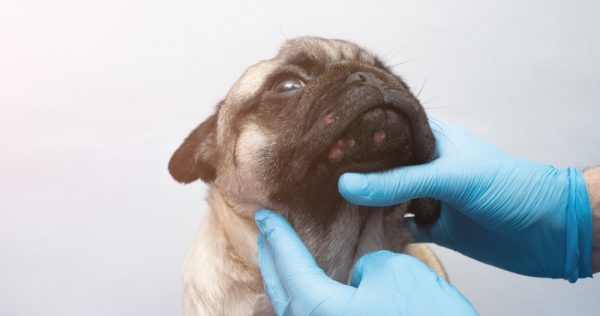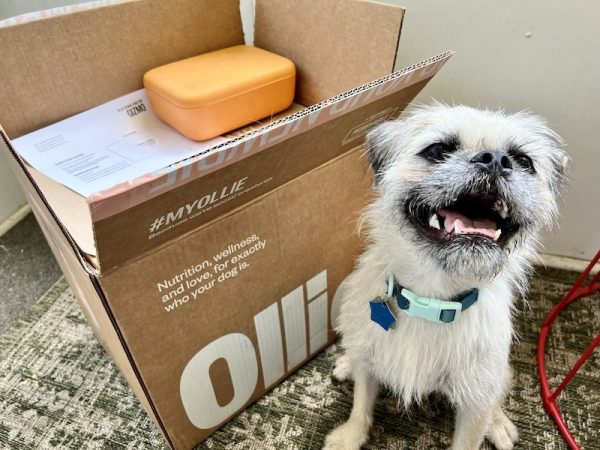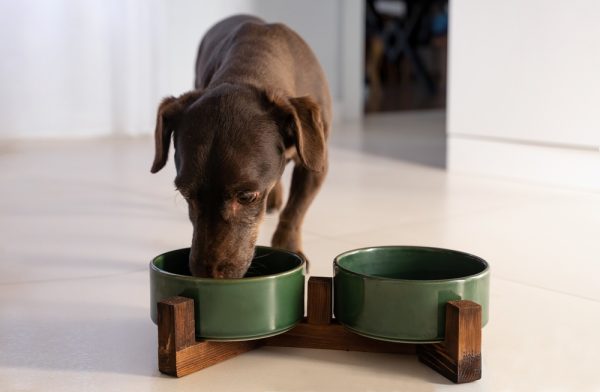Puppies are always adorable, especially when they’re Corgis. These tiny bearlike pups are enough to make anyone want to breed a Corgi, but dog pregnancy and birth are not without risks and complications.
Whether you have an “oops” litter or you’re planning to breed, you need to prepare for what’s involved. Like other breeds, Corgis are pregnant for about 63 days, and then you have to plan for the delivery and caring for puppies.

How Long Are Corgis Pregnant?
Virtually all dog breeds are pregnant for 62 to 64 days, with the average around 63 days, but can range anywhere from 57 to 65 days. The date of breeding isn’t always aligned with the date of conception, and different breeds and litter sizes can alter the timeline.
Puppies develop quickly in utero. By the end of the first month, a veterinarian can detect fetal heartbeats. In the second month, the blobs begin to look like recognizable puppies. They’re born around the start of the third month.
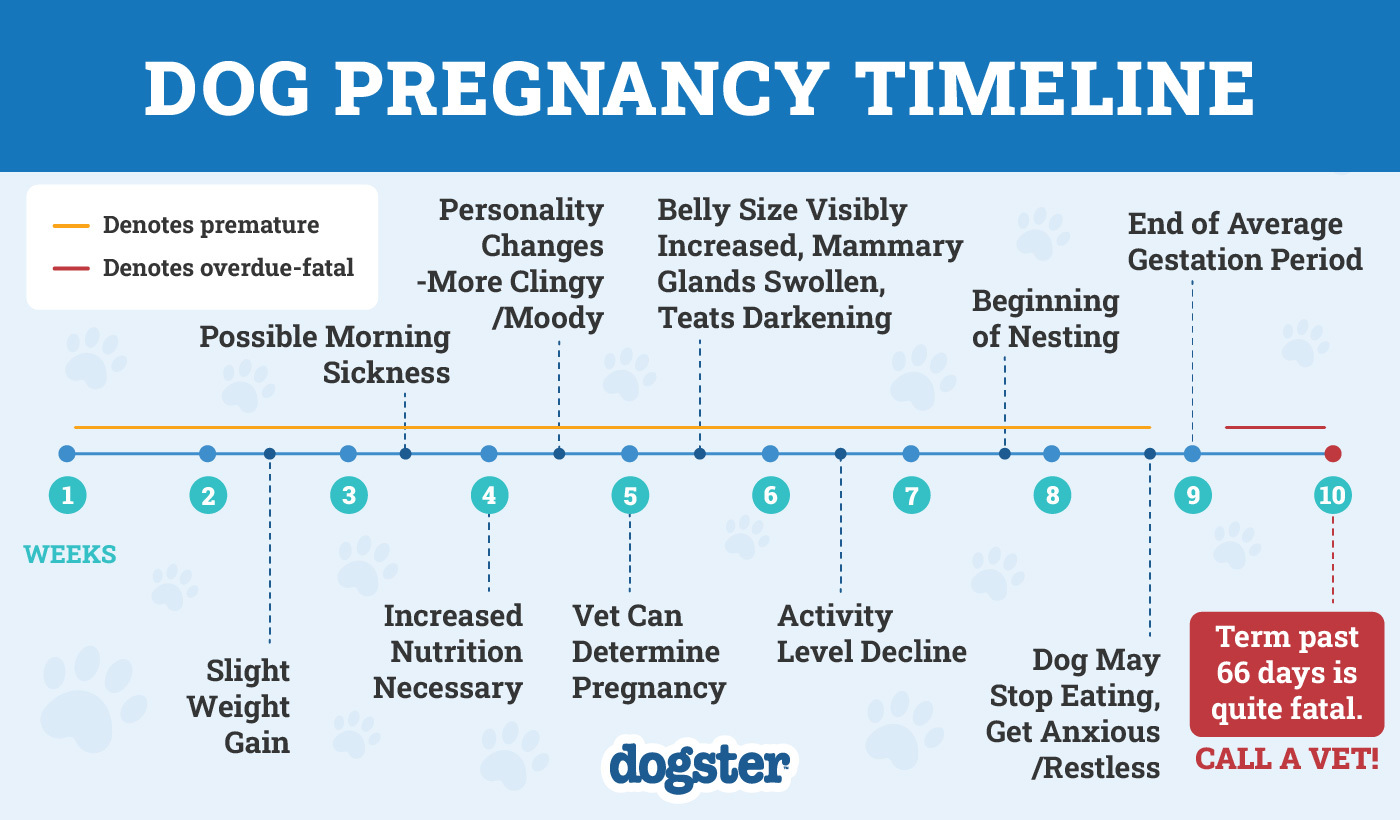
How to Tell If Your Dog Is Pregnant
If you have an intact female that tied with a male (or your dog was in a situation with intact males that could’ve resulted in breeding), you may be wondering how you can tell if she’s pregnant.
Some signs of pregnancy are obvious, such as weight gain, increased appetite, and a swollen belly. You may also see an increase in nipple size, irritability, increased affection, lethargy, and nesting behaviors. Some dogs also experience a bit of “morning sickness” with vomiting and inappetence.
False pregnancy is possible in dogs, however, so the best way to know for sure is with a veterinary exam. Vets can determine if your dog is pregnant using a variety of diagnostic tests, including:
- Palpation
- Ultrasound
- Radiographs
- Hormone testing
These tests rely on different indicators and may be more or less reliable at different times in the gestation period. Your vet will help you determine what the best diagnostic test will be.
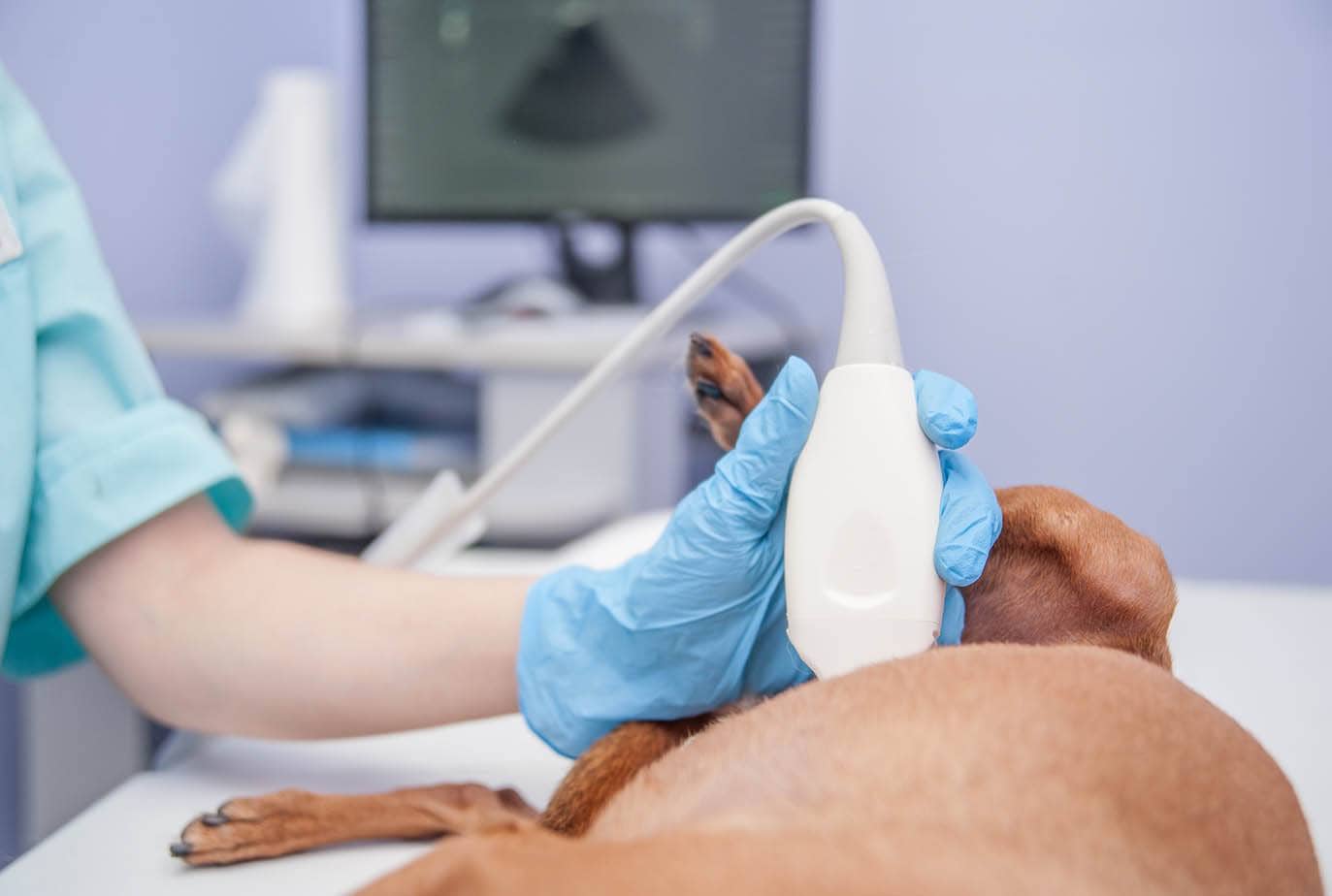
Caring for a Pregnant Corgi
If a vet confirms pregnancy in your Corgi, it’s important to provide proper care to help her stay strong and develop healthy puppies.
Ideally, you will plan to breed your dog and take her for a prenatal checkup before breeding. It’s important for breeding females to be current on vaccinations and dewormed to avoid intestinal parasites that can affect the puppies.
Regular vet visits are crucial to ensure that your dog is handling the pregnancy well and the puppies are coming along well. A vet can help you prepare for delivery, what to expect, and any possible complications. If your dog may need a cesarean, you can schedule it in advance.
Proper nutrition is the most important aspect of caring for a pregnant dog. If your dog is already on a high-quality diet, you won’t have to make any changes immediately. Follow the vet’s recommendations for food in the later stages of pregnancy.
Normal moderate exercise is generally good for pregnant dogs, but it’s best to take it easy in the first two weeks. If you’re trying to breed your dog, strenuous exercise in this early period can affect the implantation of the embryos. Keep exercise short during this time.
How Long Are Corgis in Labor?
Dogs are generally in labor for three to 12 hours. Many dogs are self-sufficient when it comes to pregnancy and delivery, but you can help the process by preparing in advance.
As it gets closer to the expected delivery date, prepare a nest or whelping box for your dog. This should be a safe, warm box that can be placed in a quiet spot for your dog. You can either purchase a premade whelping box or rely on a homemade one. It should be shallow enough for your dog to get in easily but not so shallow that the pups can get out.
Be sure to introduce your dog to the whelping box beforehand. Otherwise, your dog may find her own safe space to deliver, and that may not be the place you want that kind of a mess.


Preparing for Whelping
When your dog is ready to deliver, you will see signs like panting and nesting behavior. Your dog may have a drop in temperature from the normal range of 100 to 102.5 to 98 or 99 degrees or lower. You may also notice contractions, straining, and moaning.
When the first puppy is ready to be delivered, you may see the water sac in the birth canal. The puppy should be delivered within a few minutes, no longer than 20 minutes, followed by each additional puppy. If it’s taking more than 20 minutes to deliver this puppy or two hours pass between puppies, contact a vet. Usually, the length of labor in hours is equal to the number of puppies in the litter. So, if there are eight puppies, it may take eight hours to deliver.
It’s important to keep track of the placentas. There should be one for each puppy. If you’re missing a placenta, contact a vet. Retained placentas can cause illness in the mother.
Did you know you can speak to a veterinarian without having to travel? Just head over to PangoVet. It's an online service where you can talk to a vet online and get the advice you need for your pet — all at an affordable price!

As the puppies are delivered, you’ll notice that each of them has a placental membrane completely covering them as they are coming out. The mother will usually lick this off, but if she doesn’t, you have to open it to allow the puppy to breathe. Time is of the essence, as the puppy can suffocate quickly or aspirate the fluid into their lungs. You may need to rub the puppy gently with a towel until you hear crying.
You’re also responsible for the umbilical cords. Your dog may sever the cords herself, but if she doesn’t or one is bleeding, you have to do it. Snip the cord and tie it off with dental floss about one inch from the belly. Speak to a vet well in advance of your dog’s whelping about all the ways to support the mother dog and how to care for the puppies, including checking their umbilicus.
If the labor is long, your dog may need to go outside to relieve herself or get a drink of water. Keep a close eye on her, as she may deliver while walking around. Keep the newborn puppies warm in their whelping box with a towel.
When whelping is complete, place the pups along the mother’s belly to nurse. Make sure she’s allowing them to nurse as soon as possible and none of them are having breathing issues or any other concerns. Also ensure they are actually latching on appropriately, as some may have a weaker suckling reflex and may initially struggle to find the teat. Weigh the puppies daily and monitor their progress and health closely.
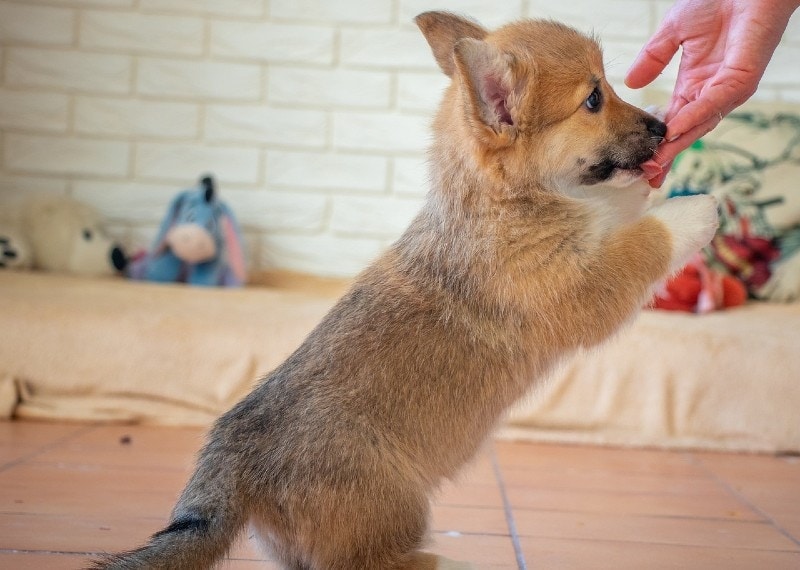
Complications With Dog Pregnancy
Dogs often have smooth, easy pregnancies, but some abnormalities and complications can arise. It’s best to be prepared and know how to respond.
- A temperature drops without labor within 24 hours
- Vaginal bleeding that isn’t settling down within a few minutes
- Active contractions for 20 minutes and more without passing a puppy
- Labor longer than 24 hours
- Longer than two hours between puppies
- Severe discomfort or green and thick discharge prior to the first puppy (normal otherwise just before each puppy)
- Puppy or fluid sac stuck in birth canal
- Puppy coming out tail first without being passed within a few minutes, or getting stuck
- Trembling, collapsing, or shivering
- No signs of whelping after mating
- Retained placentas
- Puppies that don’t nurse
- Mother injuring the puppies
- Mother developing a fever or smelly vaginal discharge

Conclusion
Corgis have similar pregnancies to other dog breeds. If you have a pregnant Corgi, the best way to prepare is by speaking with a vet and planning for whelping. The more you know, the easier it will be to address issues as they come.
See also:
- Do Corgis Sleep a Lot? Reasons & Tips to Keep Them Active
- How to Discipline a Corgi Puppy – Tips & Tricks
Featured Image Credit: Paul’s Lady, Shutterstock
